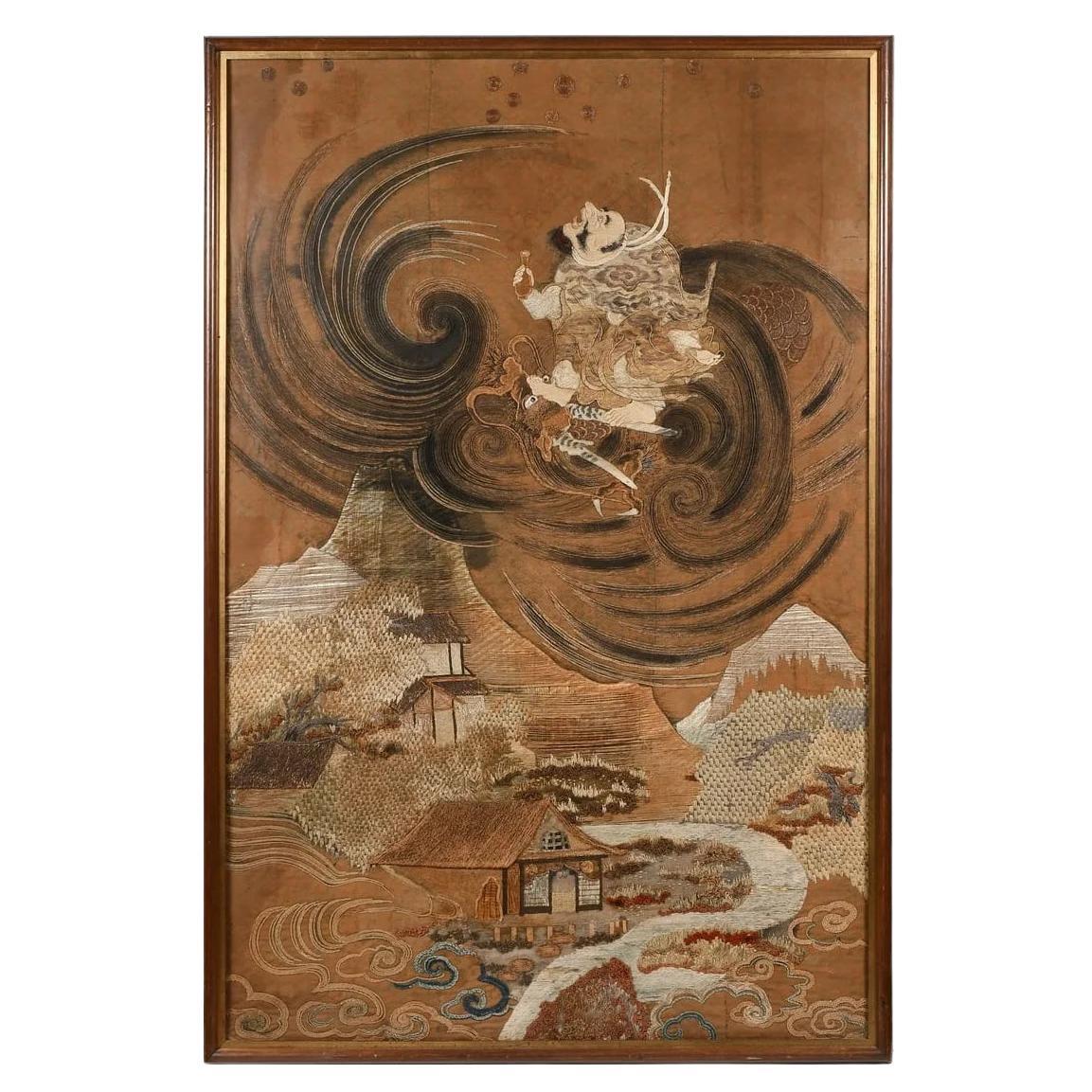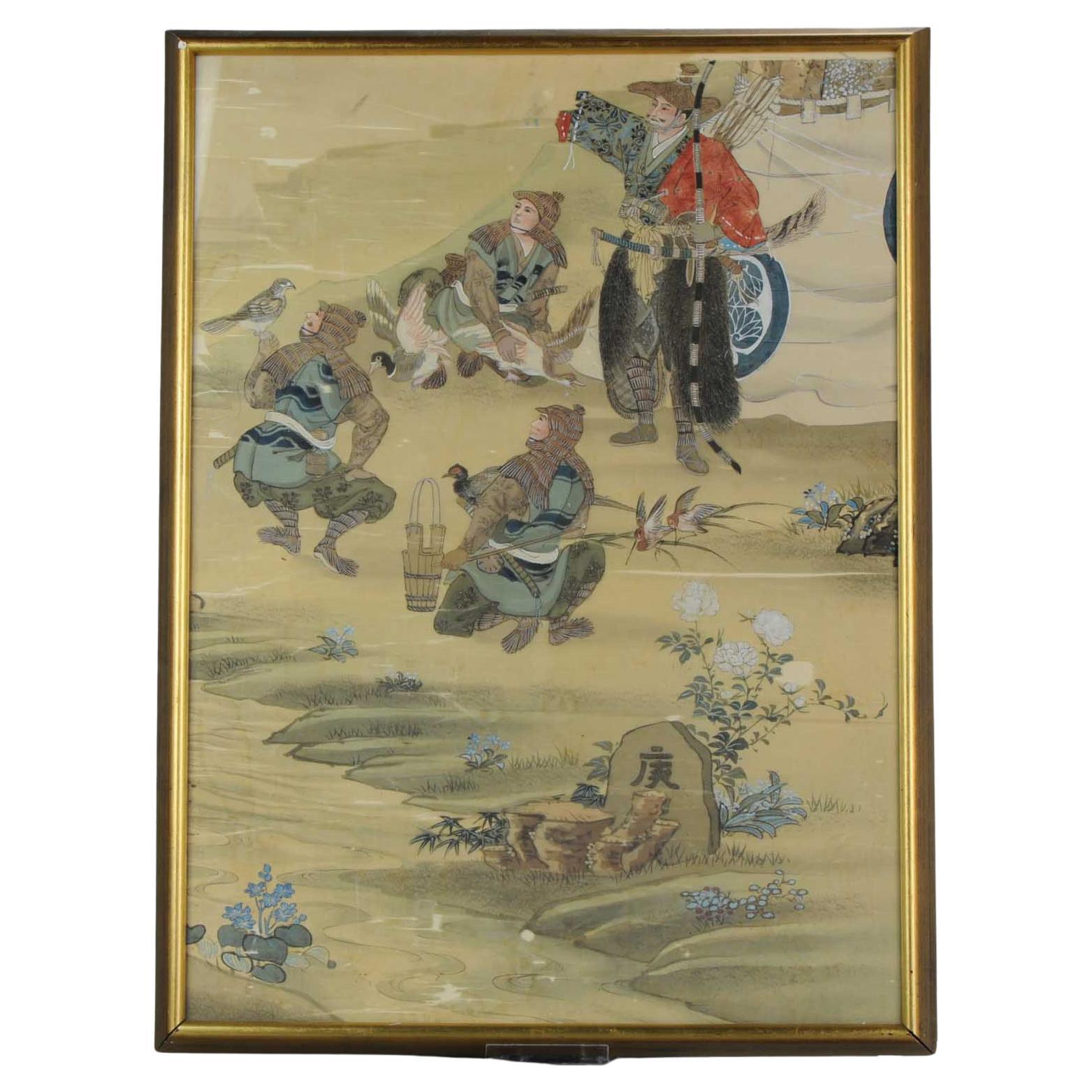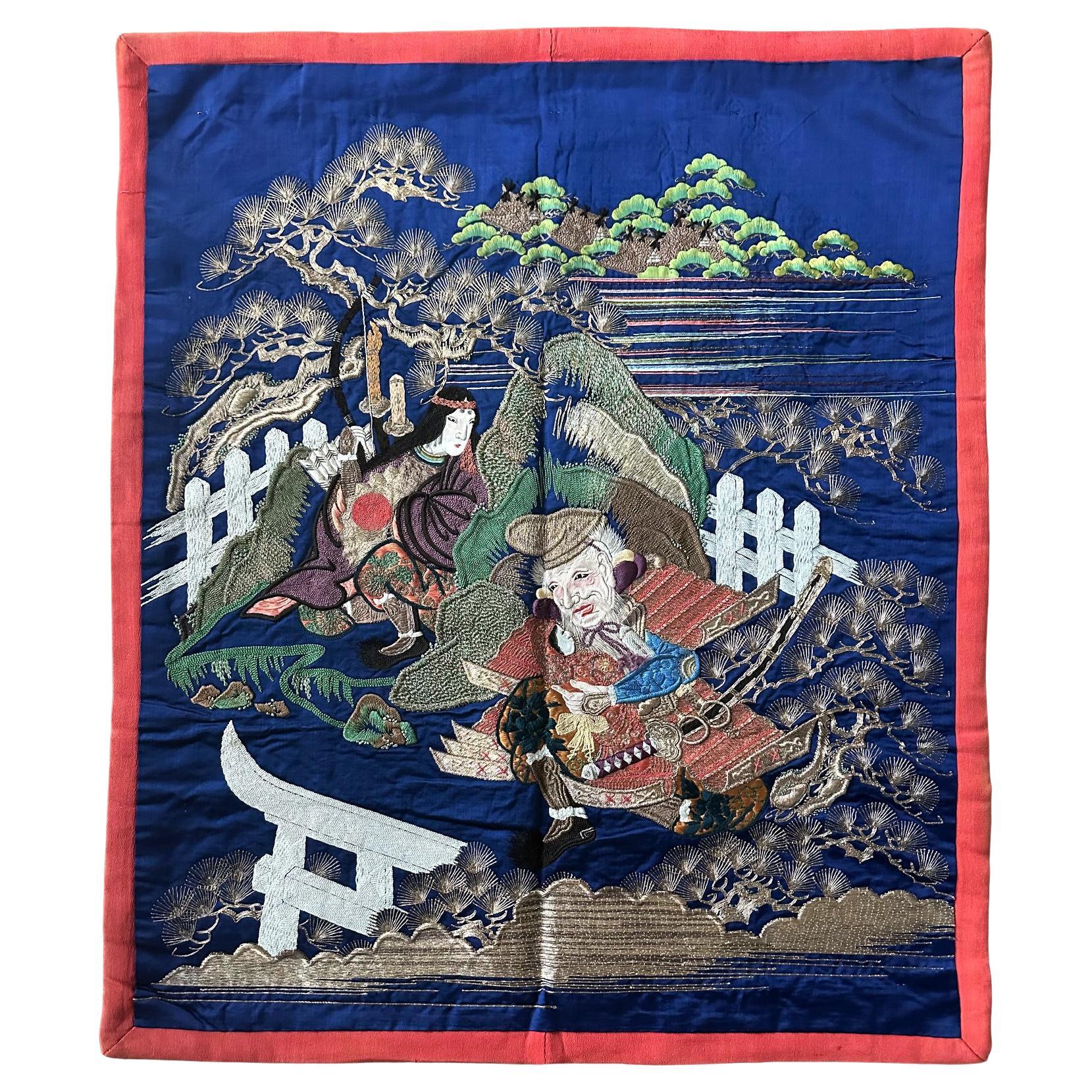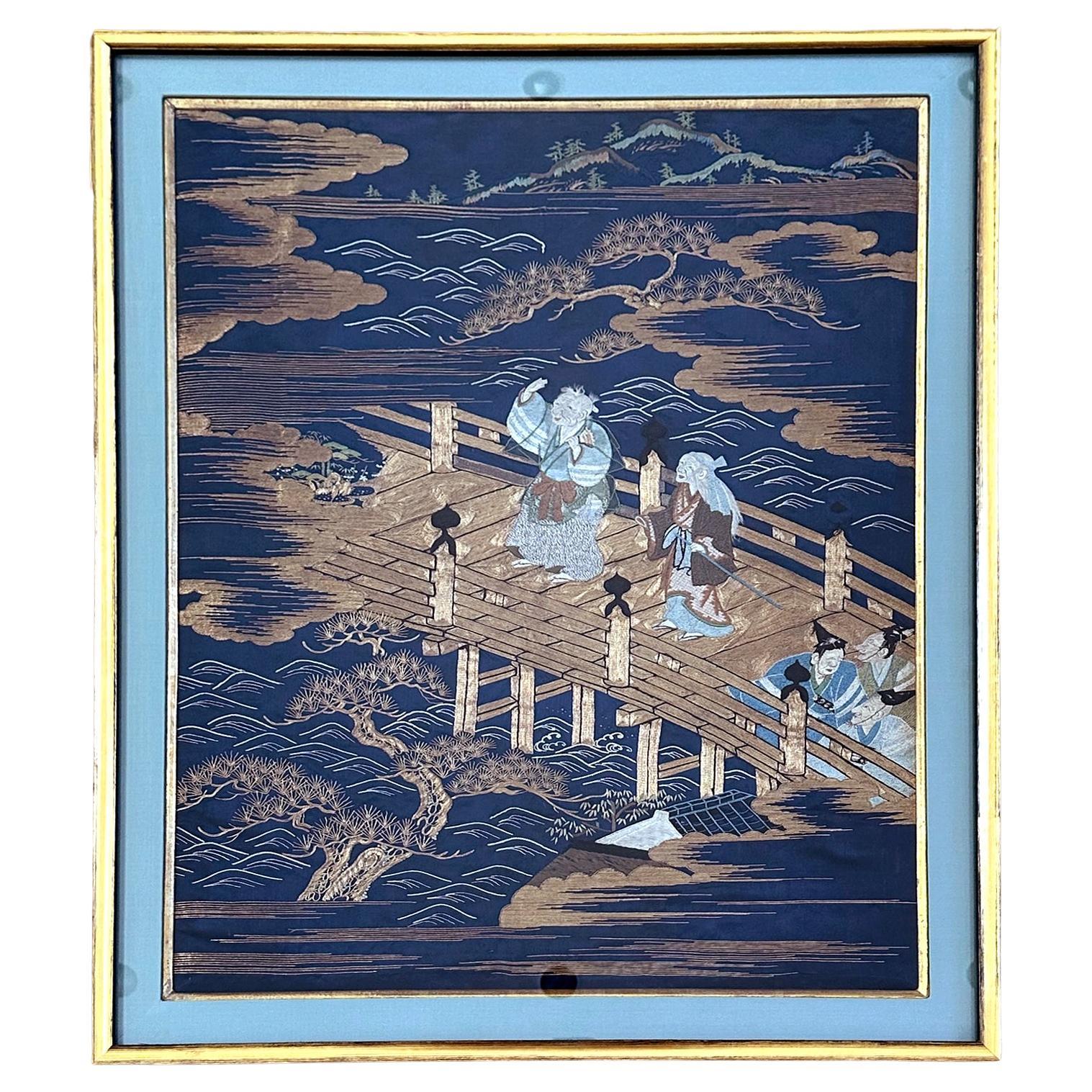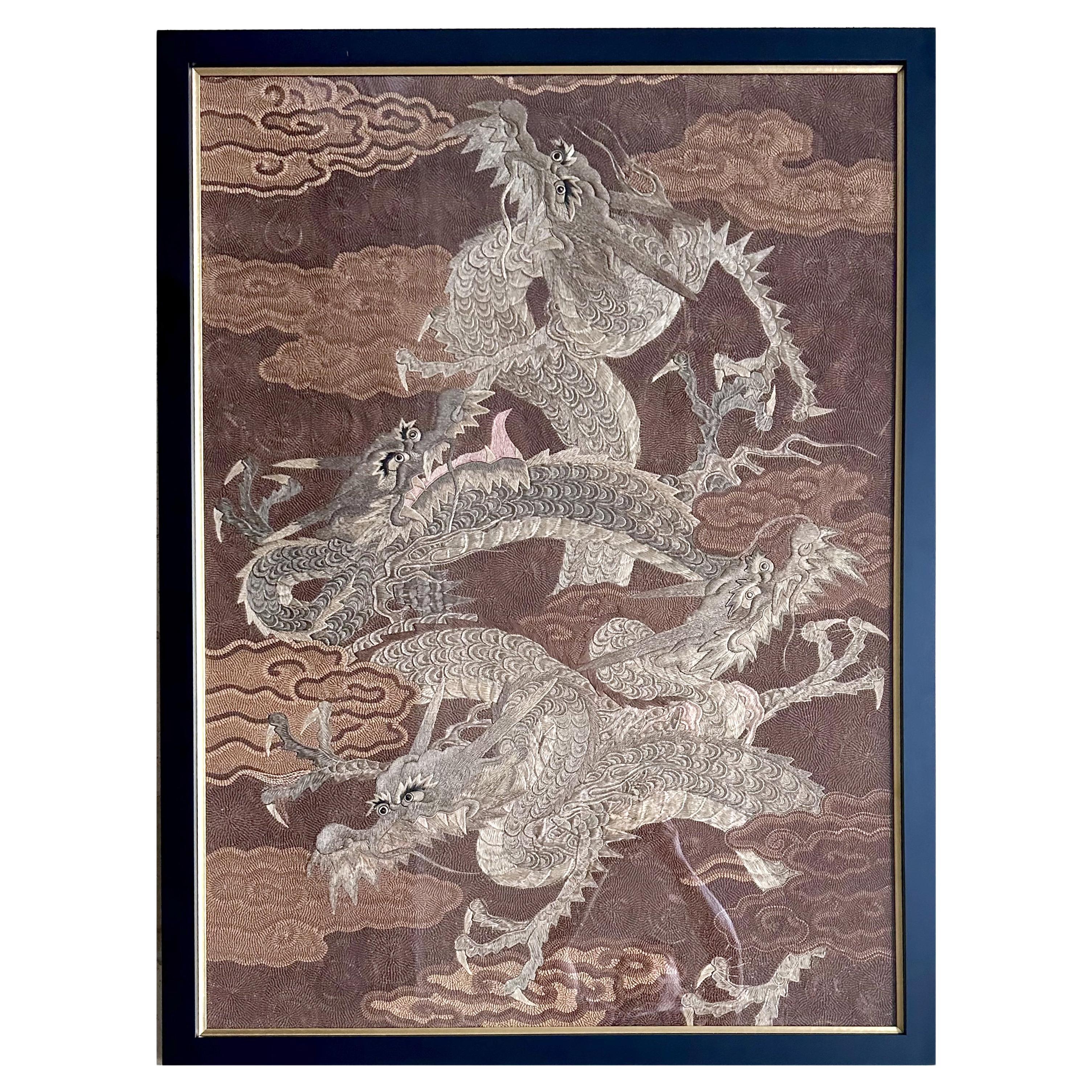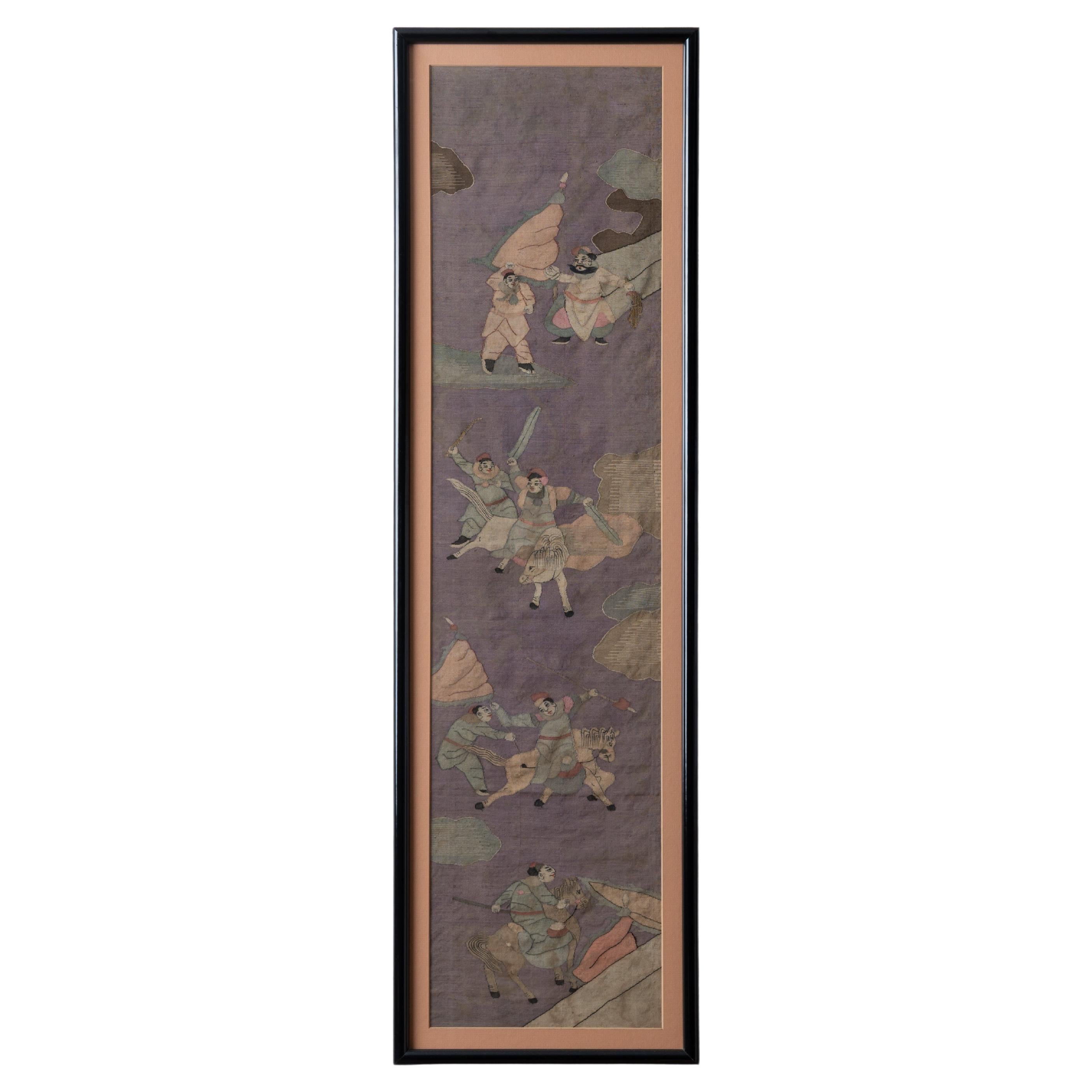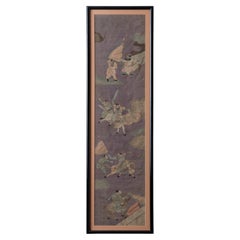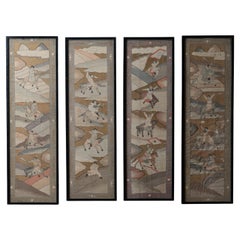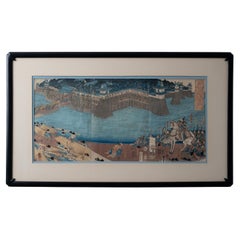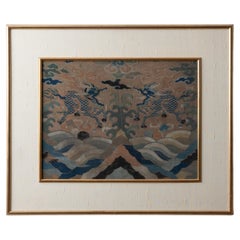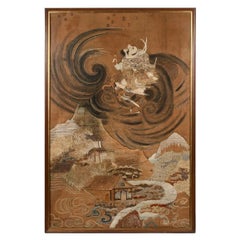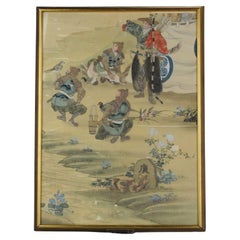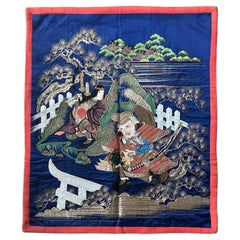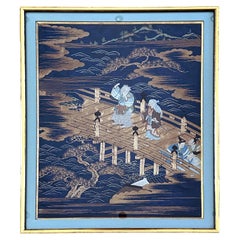Items Similar to Japanese Samurai Battling Tengu Embroidered Tapestry, 19th Century
Want more images or videos?
Request additional images or videos from the seller
1 of 13
Japanese Samurai Battling Tengu Embroidered Tapestry, 19th Century
$7,800
£5,895.83
€6,775.36
CA$10,861.45
A$12,082.92
CHF 6,334.02
MX$147,650.34
NOK 80,655.82
SEK 75,926.30
DKK 50,575.50
Shipping
Retrieving quote...The 1stDibs Promise:
Authenticity Guarantee,
Money-Back Guarantee,
24-Hour Cancellation
About the Item
A Meiji tapestry of silk, wool and gold thread depicting samurai battling tengu, 19th century.
56 ¼ inches wide by 74 ½ inches tall by 2 inches deep
- Dimensions:Height: 74.5 in (189.23 cm)Width: 56.25 in (142.88 cm)Depth: 2 in (5.08 cm)
- Style:Meiji (In the Style Of)
- Materials and Techniques:
- Place of Origin:
- Period:
- Date of Manufacture:19th century
- Condition:Wear consistent with age and use. Minor losses. Minor structural damages. Good overall; mounted on board and framed. Some areas of loss, areas of loose couching and wear.
- Seller Location:Savannah, GA
- Reference Number:1stDibs: LU9288245908172
About the Seller
5.0
Platinum Seller
Premium sellers with a 4.7+ rating and 24-hour response times
Established in 2013
1stDibs seller since 2023
75 sales on 1stDibs
Typical response time: 1 hour
- ShippingRetrieving quote...Shipping from: Savannah, GA
- Return Policy
Authenticity Guarantee
In the unlikely event there’s an issue with an item’s authenticity, contact us within 1 year for a full refund. DetailsMoney-Back Guarantee
If your item is not as described, is damaged in transit, or does not arrive, contact us within 7 days for a full refund. Details24-Hour Cancellation
You have a 24-hour grace period in which to reconsider your purchase, with no questions asked.Vetted Professional Sellers
Our world-class sellers must adhere to strict standards for service and quality, maintaining the integrity of our listings.Price-Match Guarantee
If you find that a seller listed the same item for a lower price elsewhere, we’ll match it.Trusted Global Delivery
Our best-in-class carrier network provides specialized shipping options worldwide, including custom delivery.More From This Seller
View AllChinese Kesi Panel, 19th Century
Located in Savannah, GA
A Chinese silk embroidered kesi panel, Qing Dynasty, 19th Century.
12 inches wide by 40 inches tall
Category
Antique 19th Century Chinese Qing Textiles
Materials
Silk, Glass, Wood
Chinese Silk Kesi Panels, 19th Century
Located in Savannah, GA
A set of four Chinese silk kesi embroidered panels, Qing Dynasty, 19th Century.
larger pair: 11 ⅞ by 38 ½ inches
smaller: 11 ½ by 37 ½ inches
Category
Antique 19th Century Chinese Textiles
Materials
Silk, Glass, Wood
$9,000 / set
Utagawa Kuniyoshi - Harunga’s Restoration of Castle Woodblock, c.1850
By Utagawa Kuniyoshi
Located in Savannah, GA
Utagawa Kuniyoshi
(Japanese, 1798-1861)
A tryptich woodblock print depicting Ota Harunaga observing the restoration of the Kiyosu Castle, 1847-1852.
sight: 29 ¾ by 14 ½ inches...
Category
Antique 1850s Japanese Prints
Materials
Glass, Wood, Paper
Silk Kesi Qilin Panel, c.1660
Located in Savannah, GA
A woven silk kesi qilin panel, Qing Dynasty, Shunzhi to Kangxu period, circa 1660.
Panel with gilt thread archivally framed with glazing under fillet and exposed silk mat.
sight: 21...
Category
Antique 17th Century Chinese Qing Textiles
Materials
Silk, Glass, Wood
Japanese Silk Embroidery in Lacquer Frame, c.1890
Located in Savannah, GA
A Japanese export silk embroidery of a Shinto shrine in original parcel gilt ebonized lacquer frame, circa 1890.
29 ¼ by 24 ¾ inches
Category
Antique Late 19th Century Japanese Meiji Textiles
Materials
Silk, Glass, Wood, Lacquer
Chinese Silk Embroidered Panel, Qing, 19th Century
Located in Savannah, GA
A Chinese Qing Dynasty silk embroidered mirrored panel, 19th century.
Sight: 9 by 21 inches
frame: 10 ¼ by 22 ¼ inches
Category
Antique 19th Century Chinese Qing Textiles
Materials
Silk, Wood
You May Also Like
Framed Japanese Antique Embroidery Sennin Tapestry Meiji Period
Located in Atlanta, GA
A stunning Japanese embroidery tapestry circa 1880s-1900s from late Meiji period, presented with an original wood frame with inner gold trim. The tour-de-force embroidered tapestry s...
Category
Antique 1890s Japanese Meiji Textiles
Materials
Silk, Giltwood
Samurai Japanese Scene Meij Period Painting Japan Artist, 19/20th Century
Located in Amsterdam, Noord Holland
Very nice painting with Japanese Samurai Scene. 19/20th century
Additional information:
Material: Wood / Bamboo
Primary Material: Paper
Region of Origin: Japan
Condition: Some minim...
Category
20th Century Japanese Meiji Paintings
Materials
Paper
Fine Japanese Embroidery Silk Fukusa Kabuki Story Meiji Period
Located in Atlanta, GA
A Japanese silk embroidery Fukusa panel circa 1890-1910s toward the end of Meiji Period. The spectacular needlework on this piece is a tour-de-force showcasing a scene from Kabuki th...
Category
Antique 1890s Japanese Meiji Textiles
Materials
Silk
Framed Antique Japanese Embroidery Fukusa Panel Takasago Legend
Located in Atlanta, GA
A finely embroidered Japanese silk Fukusa panel presented in a beautiful silk-lined giltwood frame (newly framed and glazed), circa late 19th century of Meiji Period. Fukusa is a traditional Japanese textile art used to wrap and present gifts at important occasions. Depending on the occasion, the panel itself can be a very fine textile art on its own.
On the deep blue background, this elaborate textile art depicts an old couple standing on a bridge with three bystanders, flanked by pine trees with hills afar. The couple is Jotomba (Joo and Uba are their respective names), characters in the Legend of Takasago, one of the oldest Japanese mythologies, who are associated with old pines. The legend goes as: "At Takasago Shrine there is a very old pine tree, the trunk of which is bifurcated; in it dwells the spirit of the Maiden of Takasago who was seen once by the son of Izanagi who fell in love and wedded her. Both lived to a very great age, dying at the same hour on the same day, and since then their spirits abide in the tree, but on moonlight nights they return to human shape to revisit the scene of their earthly felicity and pursue their work of gathering pine needles. His pine tree is called “The Pine of Suminoe” while hers is "Takasago pine".
In Japan, Takasago couple...
Category
Antique Late 19th Century Japanese Meiji Textiles
Materials
Silk, Wood
Framed Japanese Embroidery Dragon Tapestry Meiji Period
Located in Atlanta, GA
A striking Japanese embroidery tapestry circa 1890s Meiji period presented in a gilt wood frame under glaze. The design features four dragons coiling and slithering in the clouds. The most auspicious mythological creature, dragon was a very popular motif in Japanese textile art. Viewing this particular piece, one is struck by the superb craftsmanship with the profuse use of silver threads in satin stitches and complex chain stich coiling that create the background. The slight relief technique was also used on parts of the dragon heads, rendering the piece a strong sense of dimension and motion. The textile itself measures about 32.5"x46".
Japanese Meiji textiles were widely exhibited in the west during turn of the 20th century at the international exposition. It was used to showcase the Japanese aesthetics with the techniques at their pinnacle. These expositions solidified the country's images overseas and felled the Japanese craze in the west, which turned out to be a long-lasting influence on the western art. Many pieces were purchased and stayed in the west. As there is no brocade border present, the piece is likely the main part with the central motifs of a larger tapestry and was later framed for display.
For two similar dragon tapestries...
Category
Antique 1890s Japanese Meiji Textiles
Materials
Textile, Wood
Framed Japanese Antique Phoenix Dragon Embroidery Tapestry Meiji Period
Located in Atlanta, GA
A visually stunning Japanese embroidery tapestry circa 1890s-1900s late Meiji period, presented with a linen matt with gold trim in a gilt wood frame. The design showcases a flying p...
Category
Antique 1890s Japanese Japonisme Textiles
Materials
Silk, Giltwood
